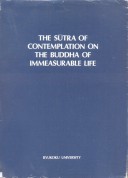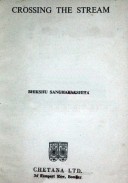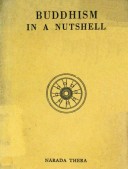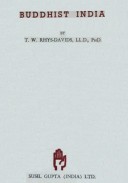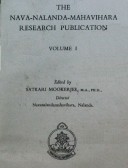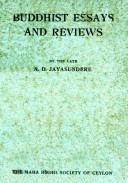Tìm Sách
Sách tiếng Anh-English >> The sutra of contemplation on the Buddha of immeasurble life
Thông tin tra cứu
- Tên sách : The sutra of contemplation on the Buddha of immeasurble life
- Tác giả : Meiji Yamada - Ronald Takemoto
- Dịch giả :
- Ngôn ngữ : Anh
- Số trang : 169
- Nhà xuất bản : Ryukoku University
- Năm xuất bản : 1984
- Phân loại : Sách tiếng Anh-English
- MCB : 12010000003905
- OPAC :
- Tóm tắt :
THE SŨTRA OF CONTEMPLATION ON THE BUDDHA OF IMMEASURABLE LIFE
AS EXPOUNDED BY SÀKYAMUNI BUDDHA
Translated and Annotated by
The Ryukoku University translation center
Under the direction of
Meiji Yamada
Ryukoku university
Kyoto, 1984
Contents
ABOUT THIS TRANSLATION
INTRODUCTION
TEXT
I.Prologue
II. The land of Utmost bliss
III. The Buddha and his attendants
IV. Birth in the pure land
V. Epilogue
APPENDIXES
I. Location of the sixteen contemplations in the text
II. Supplementary notes
III. Bibliography
IV. A comparison of the chinese characters in the Taishõ and Korean editions
V. List of Chinese proper nouns
VI. Indexes to the text
i. Sanskrit and English
ii. Chinese
INTRODUCTION
The Sũtra of contemplation on the Buddha of immeasurble life is a unique and significant work among the Buddhist scriptures of China, Korea and Japan. It is unique because within the major sũtras adopted by Pure Land Buddhists the KMK alone directly encourages ‘saying the name’ (c. j. shõmyõ), the practice which came to predominate among Pure Land followers. It is significant because it altered Buddhist practice as well as affected religious, artistic, and cultural traditions throughout central and Eastern Asia.
While the scripture contains many instructions concerning contemplation techniques, the practice of saying the name apparently is its central message. Specifically, the sũtras assures that it at the moment of death a person utters the name of the Buddha of Immeasurable life by saying ‘I take refuge in Amida Buddha’ (c. J. Namu Amida Butsu), this buddha will come with a host of sacred attendants to lead the devotee to the World of Utmost Bliss. This simple practise, based on a simple faith in the power of the buddha, had special appeal to commoners who could not participate in monasticism, traditional Buddhism’s dominant form. Monastic Buddhism was an elitist structure which demanded the mastery f highly technical and cerebral lessons, the observance of numerous difficult precepts, and the performance of rigorous mental and physical religious practices. These requirements effectively limited the inclusion of members from the lower classes who were thereby encourage to seek a more simplified form of involvement in the Buddhist religion.
 Facebook
Facebook
 Google
Google
 Google+
Google+
